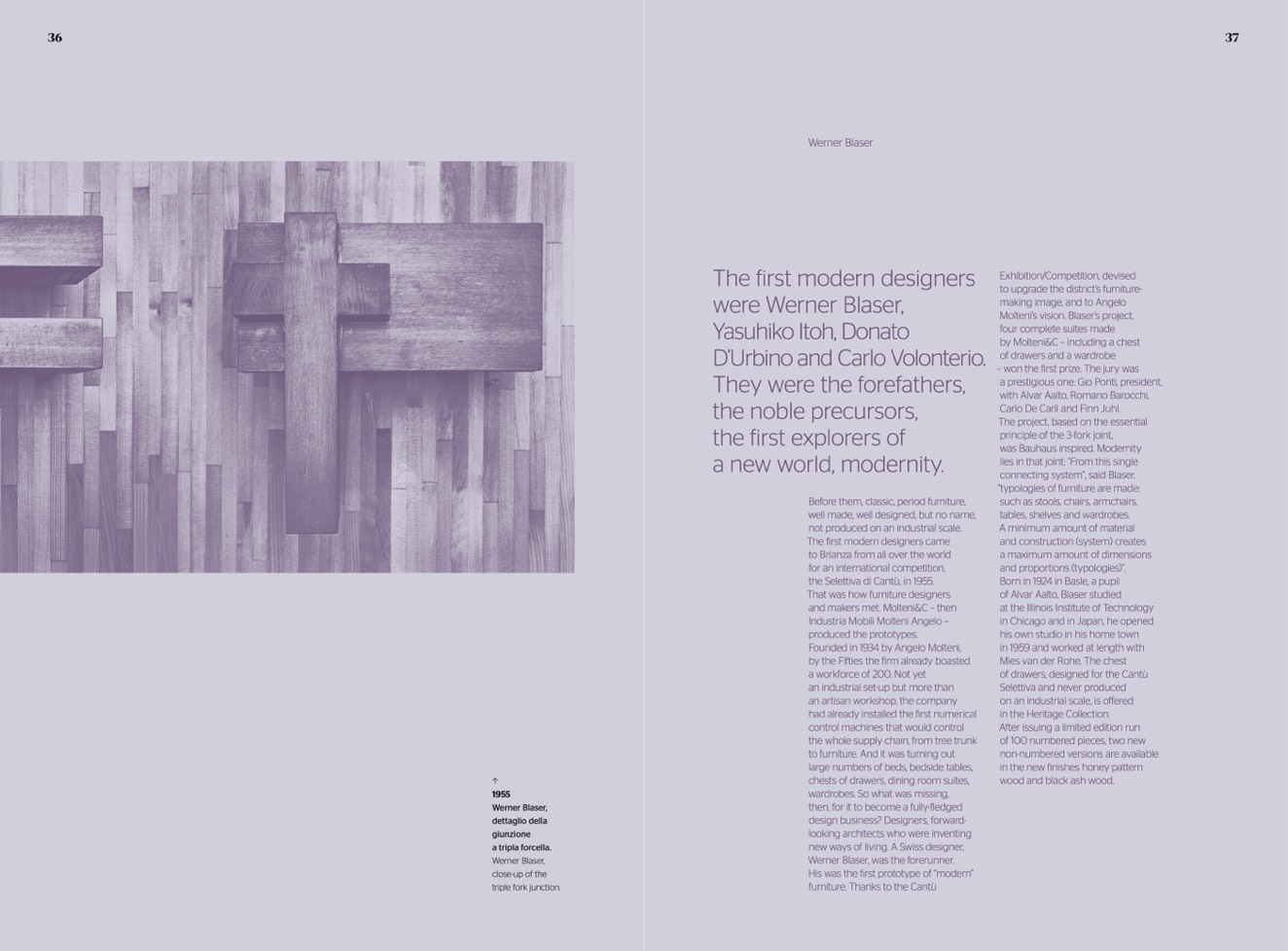
36
1955
Werner Blaser,
dettaglio della
giunzione
a tripla forcella.
Werner Blaser,
close-up of the
triple fork junction.
Werner Blaser
The first modern designers
were Werner Blaser,
Yasuhiko Itoh, Donato
D’Urbino and Carlo Volonterio.
They were the forefathers,
the noble precursors,
the first explorers of
a new world, modernity.
Before them, classic, period furniture,
well made, well designed, but no name,
not produced on an industrial scale.
The first modern designers came
to Brianza from all over the world
for an international competition,
the Selettiva di Cantù, in 1955.
That was how furniture designers
and makers met. Molteni&C – then
Industria Mobili Molteni Angelo –
produced the prototypes.
Founded in 1934 by Angelo Molteni,
by the Fifties the firm already boasted
a workforce of 200. Not yet
an industrial set-up but more than
an artisan workshop, the company
had already installed the first numerical
control machines that would control
the whole supply chain, from tree trunk
to furniture. And it was turning out
large numbers of beds, bedside tables,
chests of drawers, dining room suites,
wardrobes. So what was missing,
then, for it to become a fully-fledged
design business? Designers, forward-
looking architects who were inventing
new ways of living. A Swiss designer,
Werner Blaser, was the forerunner.
His was the first prototype of “modern”
furniture. Thanks to the Cantù
Exhibition/Competition, devised
to upgrade the district’s furniture-
making image, and to Angelo
Molteni’s vision. Blaser’s project,
four complete suites made
by Molteni&C – including a chest
of drawers and a wardrobe
– won the first prize. The jury was
a prestigious one: Gio Ponti, president,
with Alvar Aalto, Romano Barocchi,
Carlo De Carli and Finn Juhl.
The project, based on the essential
principle of the 3-fork joint,
was Bauhaus inspired. Modernity
lies in that joint: “From this single
connecting system”, said Blaser,
“typologies of furniture are made:
such as stools, chairs, armchairs,
tables, shelves and wardrobes.
A minimum amount of material
and construction (system) creates
a maximum amount of dimensions
and proportions (typologies)”.
Born in 1924 in Basle, a pupil
of Alvar Aalto, Blaser studied
at the Illinois Institute of Technology
in Chicago and in Japan, he opened
his own studio in his home town
in 1959 and worked at length with
Mies van der Rohe. The chest
of drawers, designed for the Cantù
Selettiva and never produced
on an industrial scale, is offered
in the Heritage Collection.
After issuing a limited edition run
of 100 numbered pieces, two new
non-numbered versions are available
in the new finishes honey pattern
wood and black ash wood.
37

